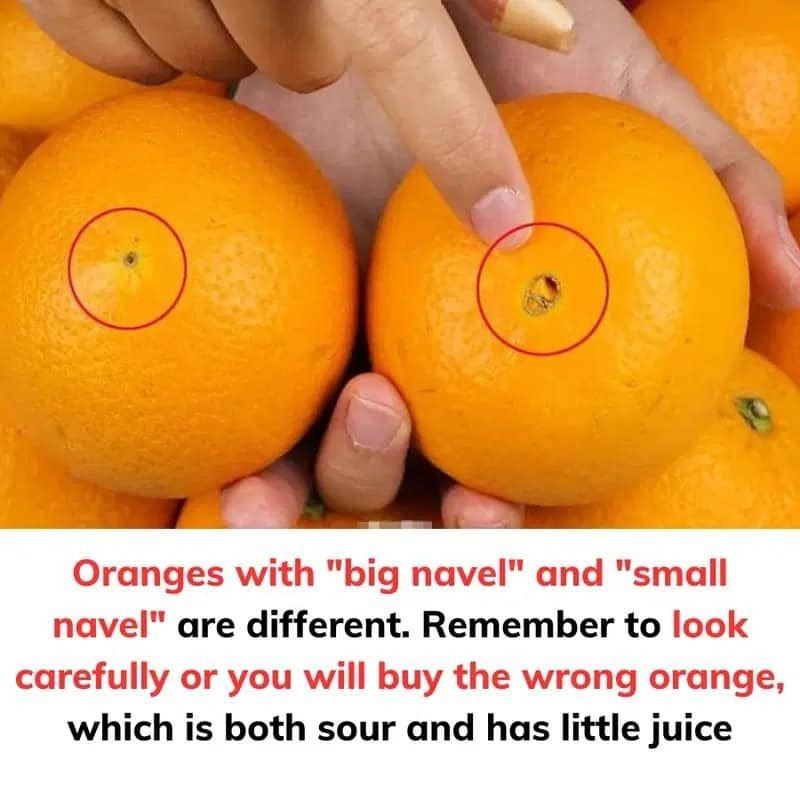ADVERTISEMENT
**Oranges with “Big Navel” and “Small Navel”: What’s the Difference?**
Oranges are a popular fruit that brightens up many dishes, from fresh salads to sweet desserts. Among the many varieties of oranges, the “navel” orange is one of the most recognized. But have you ever wondered about the difference between the “big navel” and “small navel” oranges? Though they look similar, these two types of navel oranges have distinct characteristics that can affect everything from taste to texture. Let’s take a closer look at these two varieties and explore what sets them apart.
### What Is a Navel Orange?
First, let’s clarify what exactly a **navel orange** is. The navel orange gets its name from the small, nub-like formation at the blossom end of the fruit, which resembles a human navel. This “navel” is actually a second, undeveloped fruit that grows alongside the main one. Navel oranges are typically seedless, making them a favorite for snacking and juicing. They’re sweet, juicy, and easy to peel, making them ideal for consumption both at home and on the go.
### Big Navel Oranges vs. Small Navel Oranges
When it comes to navel oranges, you’ll often see the terms “big navel” and “small navel” used. So, what’s the difference between the two?
#### 1. **Size and Appearance**
The most noticeable difference between big and small navel oranges is their **size**.
– **Big Navel Oranges**: These are typically larger, often weighing more and having a thicker peel. The size makes them more satisfying when sliced, and they have a larger amount of juice.
– **Small Navel Oranges**: As the name suggests, these oranges are smaller in size. Their peels are thinner, and the fruit is more compact, making them perfect for individual snacking.
While the “big” and “small” variations might be based on the specific cultivar or growing conditions, size is one of the most apparent features when differentiating between the two.
For Complete Cooking STEPS Please Head On Over To Next Page Or Open button (>) and don’t forget to SHARE with your Facebook friends
#### 2. **Taste and Sweetness**
Another factor that distinguishes big and small navel oranges is their **taste**. Though both varieties are sweet, there are slight differences in flavor intensity:
– **Big Navel Oranges**: These tend to have a more robust flavor with a richer, more complex sweetness. Their size and juiciness allow for a fuller taste, which many people love when making fresh juice or enjoying large, juicy slices.
– **Small Navel Oranges**: These can have a slightly milder taste compared to their larger counterparts. Due to their smaller size, the sweetness is more concentrated in each bite, but they may not have the same depth of flavor as the larger varieties.
Overall, both types are sweet, but you might find that the big navel oranges have a more pronounced, tangy sweetness, while the small navels are just a tad lighter.
#### 3. **Texture and Peel Thickness**
When it comes to **texture**, big and small navel oranges also differ slightly:
– **Big Navel Oranges**: The peel tends to be thicker and easier to peel, which can make them a great option for recipes where you want to work with large segments of orange. They are also juicier, which means you get more pulp and juice from each fruit.
– **Small Navel Oranges**: These tend to have a thinner peel and are usually a bit more delicate when peeled. The smaller size also means there is less flesh overall, so you might need a few more to get the same amount of juice or fruit.
#### 4. **Storage and Shelf Life**
Because of their size and thicker peel, **big navel oranges** generally have a slightly longer shelf life compared to their smaller counterparts. The thick skin protects the fruit from drying out and helps preserve its freshness for a longer period.
On the other hand, **small navel oranges** may need to be eaten a little sooner after purchase, as their thinner peel can make them more susceptible to bruising and drying out over time.
### Why Do They Have Different Sizes?
You might wonder why these two types of navel oranges exist. The difference in size could be due to a variety of factors, including:
– **Variety or Cultivar**: There are different types of navel oranges grown around the world, and some are naturally larger or smaller than others. The variety can be influenced by genetics or growing practices.
– **Growing Conditions**: Factors such as climate, soil, and the time of year can impact the size of the oranges. For example, oranges grown in warmer climates may develop more fruit, but with smaller sizes, while cooler climates may yield larger fruit.
– **Harvesting Timing**: Sometimes, the size of the navel orange can be influenced by when the fruit is harvested. Oranges harvested earlier in the season may be smaller, while those harvested later might grow to a larger size.
### Which One Should You Choose?
Both **big** and **small navel oranges** are delicious and offer unique benefits, so choosing between the two comes down to personal preference and intended use:
– If you’re looking for a **larger snack** or need **more juice**, go for the **big navel oranges**.
– If you prefer **smaller portions** or want a more **portable fruit** for snacking, the **small navel oranges** are a great choice.
Both are packed with vitamin C, fiber, and other nutrients, making them a healthy option for any occasion. Whether you enjoy them as a refreshing snack, in a salad, or as p
